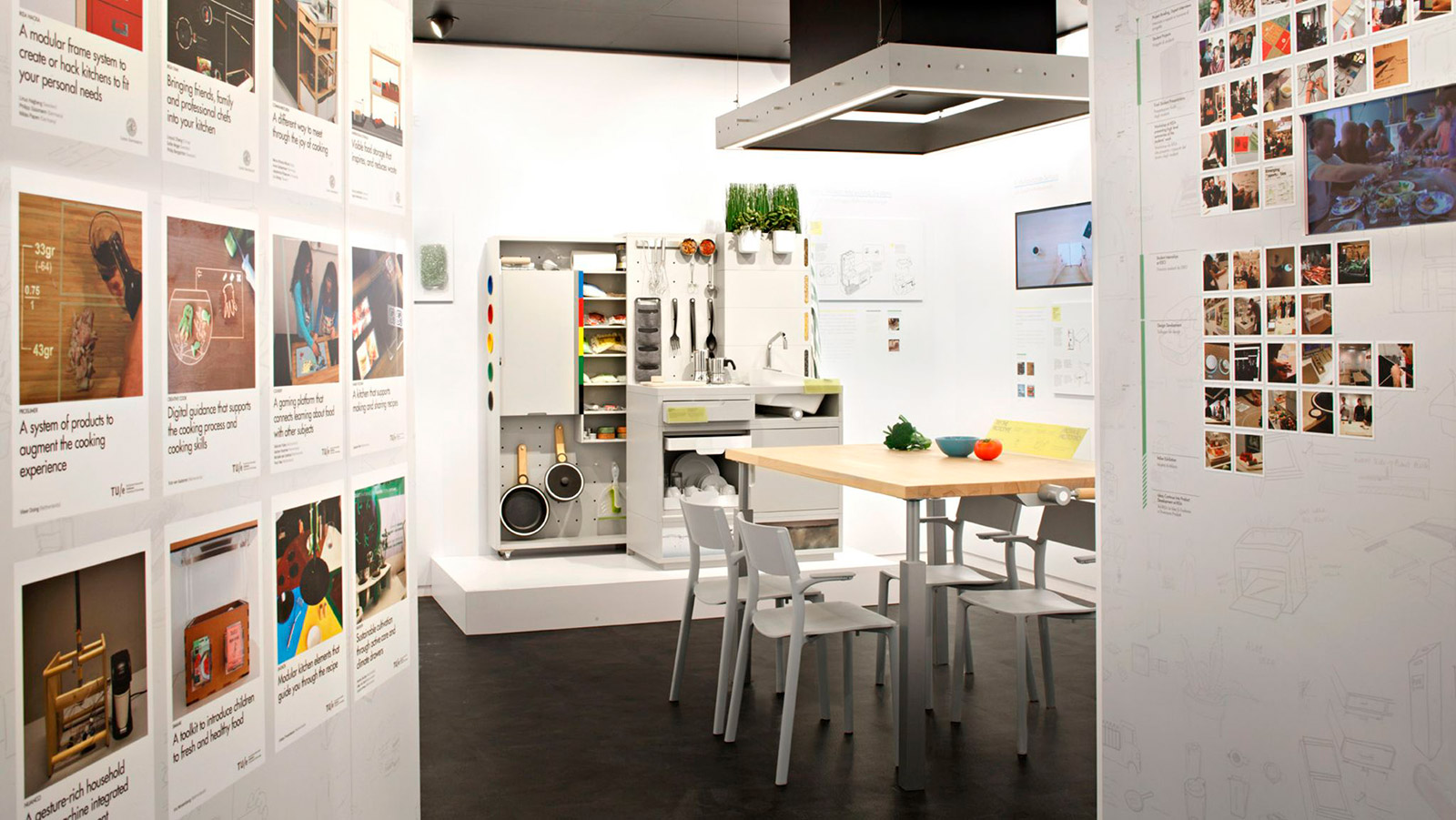
[IKEA’s Concept Kitchen 2025]
In the summer of 2017, BUILD visited with Jeremy Innes-Hopkins at IDEO’s London office to discuss the company’s trajectory from designing the first mouse for Apple to their current focuses on systematic design, longevity of experiences, and taking responsibility for the entire lifespan of a product.
IDEO originally became known for designing objects, but the firm’s work has significantly evolved since then. What is IDEO currently up to?
IDEO started about 40 years ago and was very much grounded in product design. One of our first projects was to design the Apple mouse for Steve Jobs, and we got a lot of mileage out of projects like that. But our focus has always been on understanding human needs and designing products and services to solve global challenges. You can only do so much if you stick with a product, and we’ve grown from product design all the way to systemic design at the level of regions and countries. Twenty years ago, we were asking ourselves what kind of an impact we could have on the world by designing objects, and now we’re being brought in to rethink education, government, or banking. The challenges we’re getting now are richer and more complicated, even in the way the teams are set up. Today we’re aiming to deliver disproportionate impact.
What are some examples of the projects that IDEO is currently working on at the level of regions and countries?
Peru has been a big focus area for us in the past few years. We have been working with Intercorp in Peru where we are helping to design services for the emerging middle class. Our biggest project there has been to design a new education system, Innova Schools, encompassing everything from the design of the schools themselves, to the curriculum, to the food. We also recently redesigned the way people vote in LA County, including a more inclusive and accessible voting machine. We also have a nonprofit sister organization, ideo.org, which focuses most of its work in developing areas within Africa and the Middle East.
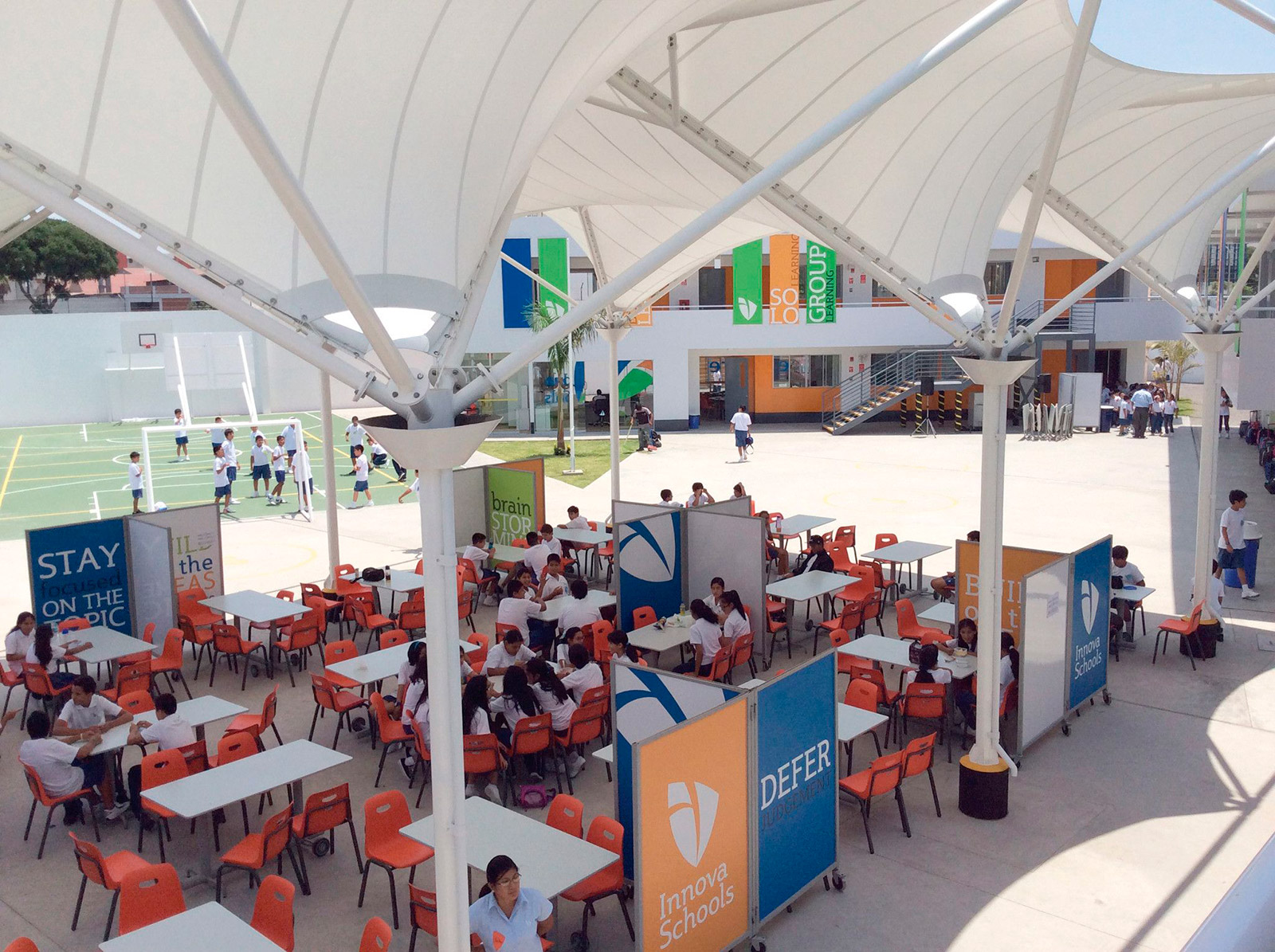
[Communal space at Innova Schools]
What does a typical team look like at IDEO?
We have everyone from design researchers, architects, product designers, and brand designers working on project teams. For our healthcare projects, we have a brain surgeon working from the IDEO office in Palo Alto. We also have an astronaut working on another project. As the challenges widen, so do the teams.
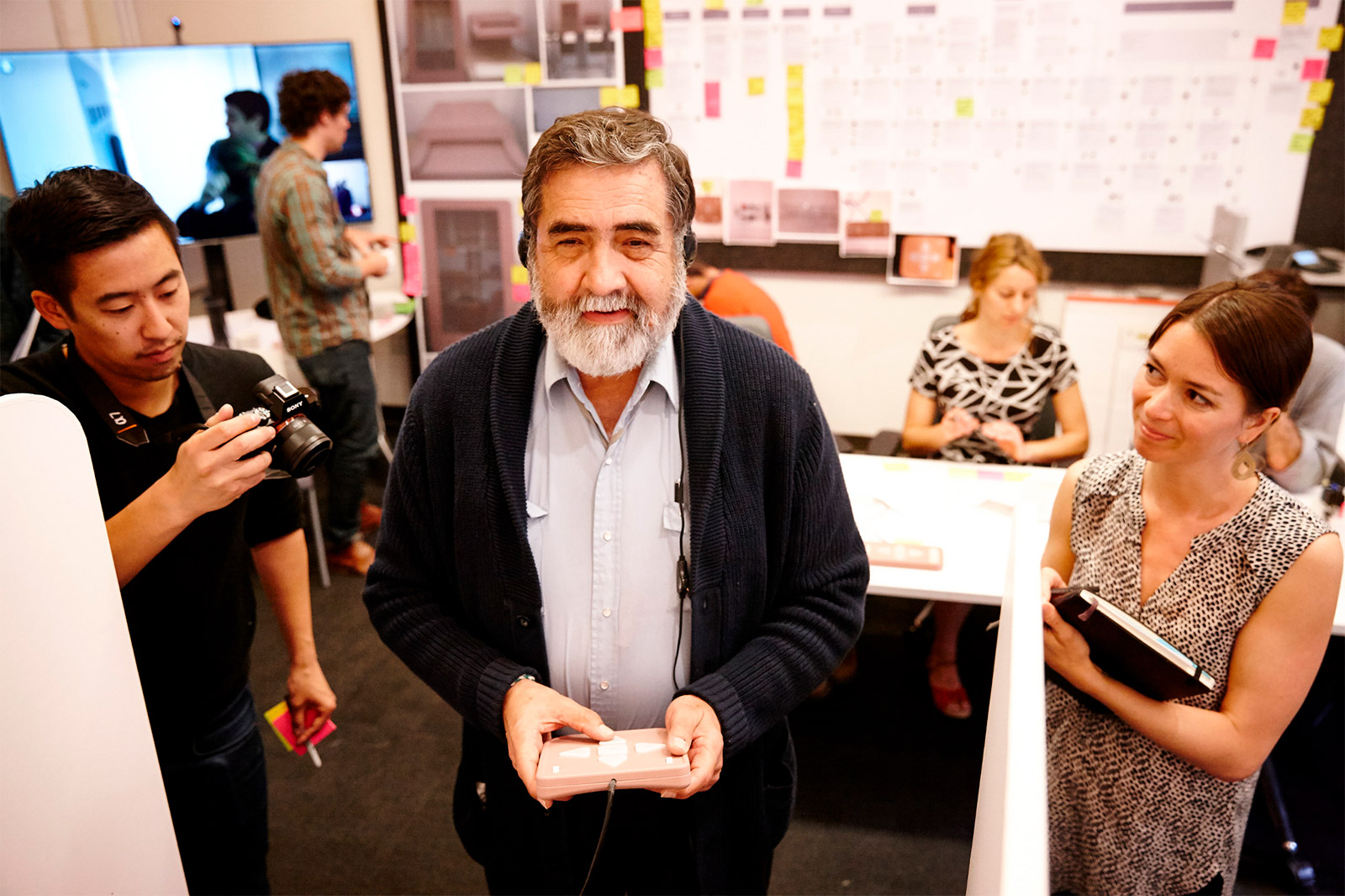
[Working closely with blind voters, design researchers strived to ensure the voting process was easy and intuitive]
What makes a great client in your opinion?
A great client is a client who wants to partner with us to create impact in the world. Rather than feeling very removed from our clients, we work best with those who want to collaborate together with us as a team.
How does a team at IDEO establish what a client needs?
Clients often come to IDEO with a design challenge in mind that we will often question in order to ensure that it is a good fit for the organization as well as for us. Once the design challenge has been accurately defined, we’ll assemble the appropriate team. Sometimes the challenge can be answered globally among our staff of 700 people around the world. Every project has a design research phase to best understand the needs of the people we’re designing for. The design researchers are typically very good at speaking with people and picking up insights. Like a journalist, they’re good at asking the right questions. The rest of the team will vary, including anyone from a product designer to a business designer depending on what the project calls for.
What differentiates the IDEO research process?
We always start by looking in and out. Looking out means going into the world and speaking to the people that you’re going to be designing for. We try and interview people in their own homes. If we’re just doing market research with a group of people in a blank white room, they’re probably not going to share some of the intimate details that we need to analyze for a proper design response. Looking in involves understanding the company we’re working with and making sure that what we’re designing is something they can deliver on. We need to understand their capabilities. If we’re coming up with something entirely new to their business, we may take on a second phase that involves their organization and might include upscaling or creating new roles to see the work through.
On every project, we try to do analogous research and look to other areas for inspiration. A good example of this is when we redesigned an emergency room for a hospital. Rather than just speaking to doctors, nurses, and patients, we studied NASCAR pit crews for their efficiency.
When we worked with the bike company Shimano we sent them to Bloomingdale’s to buy makeup. This helped them understand what it’s like to approach a shopping experience when you don’t have much knowledge about the subject matter. It informed their model of “expert cyclists” at their stores and how to communicate with shoppers that may not have a commensurate knowledge of bicycles and equipment.
While redesigning the food experience for an airline, we went and spoke to an arctic explorer about their needs for food because they’re very conscious about the weight they’re carrying and the efficiency of their utensils.
IDEO is currently working with IKEA to design the kitchen of the future. What about the kitchen of the present needs improvement?
We’ve been working with IKEA for about five years now and they originally came to us with the challenge of envisioning what the kitchen is going to look like in 2020. What’s really interesting about prefabricated kitchen design is that the first model was launched in Frankfurt in the 1940s. It had all the typical components and orientations of the kitchen you know today with the appliances, countertop, and upper cabinets that no one has really questioned since then. Different materials have been explored along with updates to the appliances, but the basic nature hasn’t been questioned. We worked alongside IKEA and a couple of universities to put together a case study and really understand the future behaviors and needs around food preparation. With homes getting smaller around the world, the results led more to surface and wall applications as opposed to an entire kitchen room. The refrigerator has also been deconstructed and reconfigured to accommodate the lifestyles of urbanites that may only store the food they intend on cooking that night.
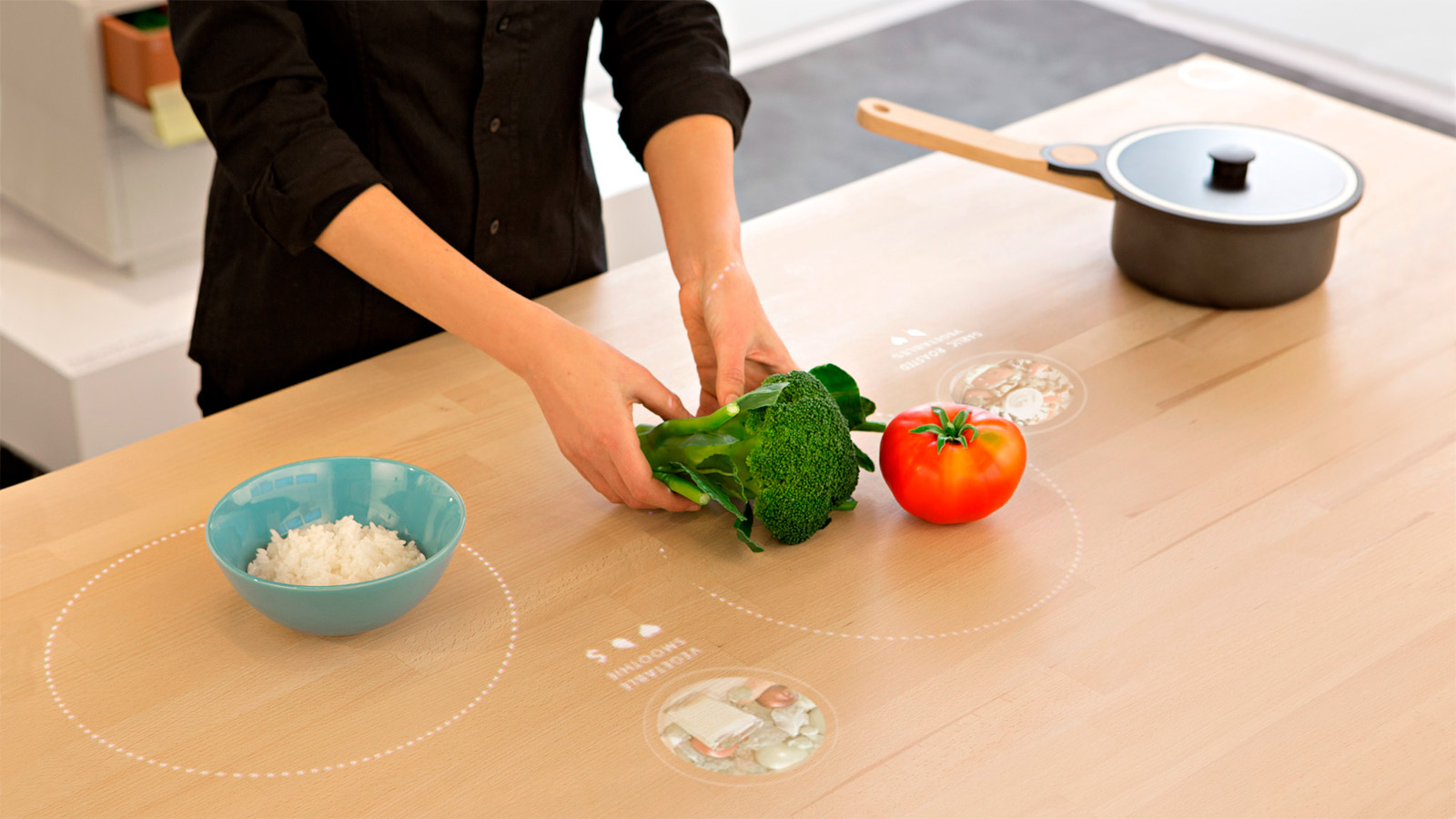
[IKEA Concept Kitchen 2025 features a table-top that recognizes ingredients and suggests recipes]
How is the design process different knowing that a design will be reproduced thousands of times?
As a product designer, I’m very conscious about creating more things in the world. Our latest thinking around this is the idea of the circular economy. If we are putting products and services out into the world, how can we work with companies that can take responsibility for those things? For instance, if you’re a sneaker company, what does it look like to take responsibility for the entire lifespan of a pair of shoes? It’s about more than just recycling products. A company would be responsible for taking the product back in, disassembling it, and reusing certain parts. The concept of the singular circular economy is not just about a product that doesn’t get thrown in the landfill, it’s also about helping to design the process of taking responsibility for the product.
Are companies up to the challenge of taking full responsibility for the lifespan of their products or does this conversation scare them off?
Enrolling companies in the single circular economy is our job at the moment. We’ve been working with the Ellen MacArthur Foundation, and they have signed up 12 corporations from around the world to work with us on this. We’re six months into the program now, and it includes companies like Nike and H&M.
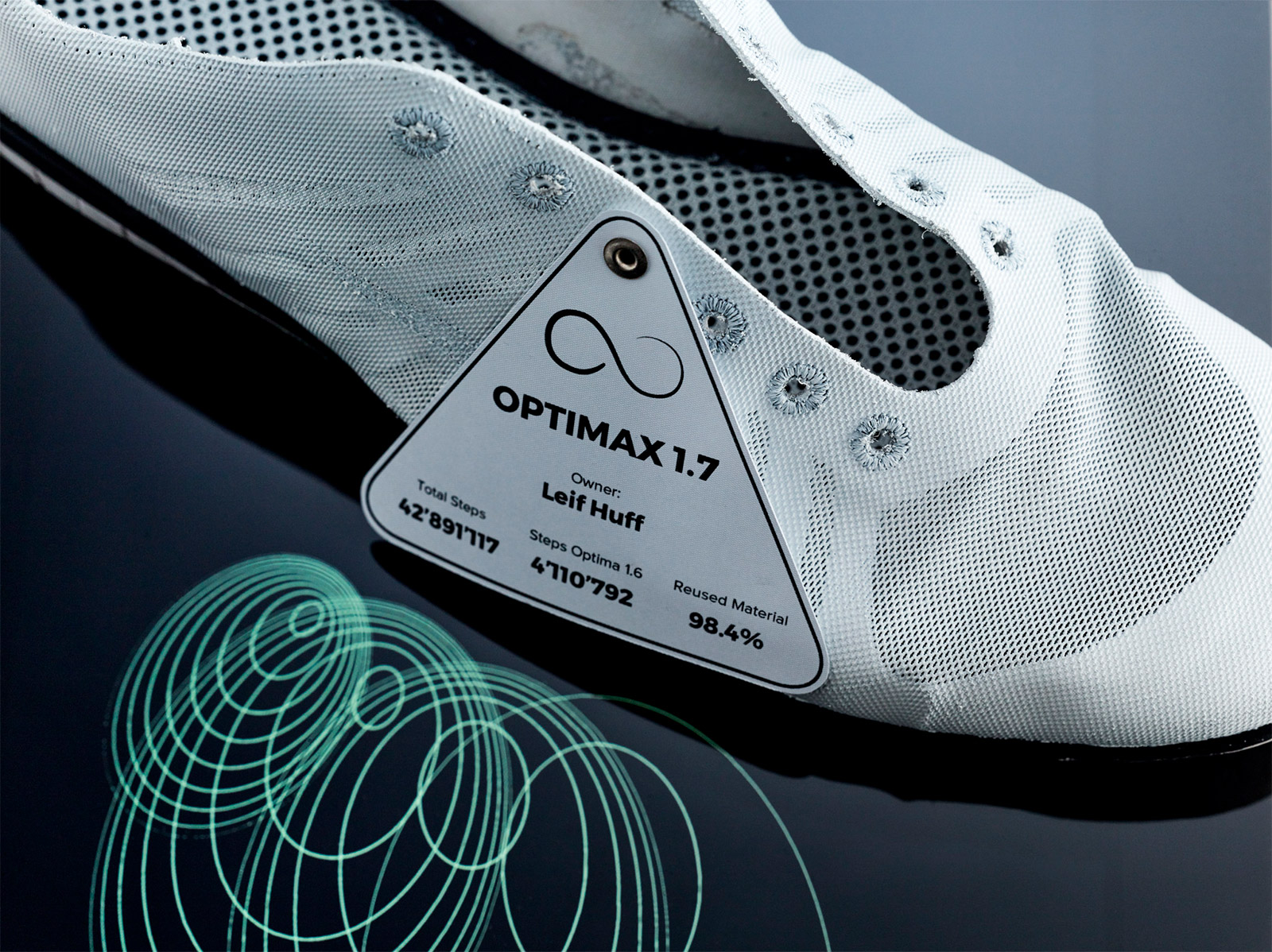
[A concept for a new running shoe]
Is there such a thing as “timeless design” in your work?
Because we’re more focused on services and experiences, we talk more about longevity than timelessness. While timelessness relates more to the object, longevity relates more to the interactions between people. Behavior can also be modified to have more longevity just as an object’s design can be changed to be more timeless. These interactions could relate to the way in which you’re served in a retail environment or a hotel. Much of our work with governments around the world is focused on longevity.
How do you stay considerate to other cultures when designing a single product that could be sold internationally?
We embed ourselves in those cultures to understand them. While I’m based here in the UK, I’m only at the London office for three months out of the year. The other nine months are spent traveling for work. I spent five months in Dubai for a recent project there and another five months in Peru for a healthcare project. The time spent in other places includes the gathering phase where we’re interviewing people in their homes and also the testing phase where we’re taking prototypes into these cultures. In order to design for a culture, you need to get embedded in that culture. In Dubai we hired a culture guide to help us understand the culture and protocols. This allows us to hit the ground running. I tend to embed myself in these cultures during the stays.
Is there a particular book that you consider required reading for all students and professionals of design?
The Laws of Simplicity by John Maeda and Less Is More by Dieter Rams.
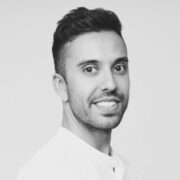 Jeremy Innes-Hopkins holds a first class degree in product design from Central Saint Martins College of Art and Design in London. He has lived in North Africa, Europe, the Middle East, Southeast Asia, and South America, and he is currently based in New York. At IDEO, Jeremy is a senior design lead working at the intersection of physical and digital design helping companies around the world to innovate within their markets.
Jeremy Innes-Hopkins holds a first class degree in product design from Central Saint Martins College of Art and Design in London. He has lived in North Africa, Europe, the Middle East, Southeast Asia, and South America, and he is currently based in New York. At IDEO, Jeremy is a senior design lead working at the intersection of physical and digital design helping companies around the world to innovate within their markets.





